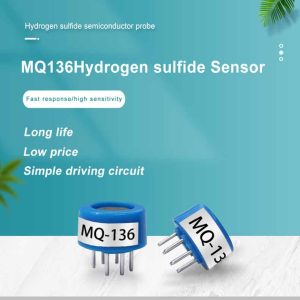Industrial safety is of paramount importance for any manufacturing facility or industrial site. The presence of hazardous gases and chemicals in the workplace poses significant risks to workers' health and safety. Therefore, the implementation of reliable gas detection systems is crucial to prevent accidents, minimize exposure to dangerous substances, and optimize industrial safety. In this article, we will explore the role of cutting-edge gas sensor solutions in enhancing industrial safety, their advanced features, and potential applications.

Chapter 1: The Importance of Industrial Safety
Ensuring a safe working environment is essential to protect employees from harm and prevent occupational hazards. Industrial sites often handle toxic and flammable substances, making it necessary to monitor the air quality and detect the presence of hazardous gases. By implementing effective gas detection systems, companies can mitigate risks, safeguard workers' health, and comply with safety regulations.
Chapter 2: Advanced Features of Cutting-Edge Gas Sensors
Cutting-edge gas sensors offer numerous advanced features that make them highly efficient and accurate in detecting hazardous gases. These features include:
a. Multi-Gas Detection: Modern gas sensors can detect multiple gases simultaneously, including flammable gases, toxic gases, and volatile organic compounds (VOCs). This capability enables comprehensive monitoring of the industrial environment and identification of potential risks.
b. Real-Time Monitoring: Gas sensors provide real-time data on gas concentrations, allowing for immediate response and preventive actions. With continuous monitoring, companies can detect gas leaks or abnormal levels promptly, reducing the possibility of accidents or explosions.
c. Wireless Connectivity: Many advanced gas sensors are equipped with wireless connectivity options, enabling remote monitoring. This feature facilitates data transmission to a centralized control system, ensuring transparency, and providing instant access to critical information.
d. Alarming and Alerting Systems: Gas sensors can be integrated with audible and visual alarms to warn workers when gas levels exceed the predefined thresholds. Additionally, these sensors can transmit alerts to supervisors or safety personnel, enabling rapid evacuation or targeted interventions.
Chapter 3: Applications of Cutting-Edge Gas Sensor Solutions
Cutting-edge gas sensor solutions find applications in various industrial sectors where the presence of hazardous gases is a concern. Some key applications include:
a. Oil and Gas Industry: Gas sensors play a vital role in oil refineries, gas processing plants, and offshore platforms. They detect flammable gases such as methane and hydrogen sulfide, ensuring the safety of workers and preventing potential explosions.
b. Chemical Manufacturing: Chemical manufacturing facilities deal with a wide range of toxic substances. Gas sensors help monitor volatile and harmful chemicals, such as chlorine, ammonia, and hydrochloric acid, reducing the risk of exposure for workers.
c. Mining Operations: In underground mining operations, the accumulation of gases like carbon monoxide and methane poses significant risks. Gas sensors enable continuous monitoring, early detection of gas leaks, and timely evacuation of workers, ensuring their safety.
d. Manufacturing and Warehousing: Industrial environments, including manufacturing plants and warehouses, often handle flammable materials and gases. Gas sensors can detect combustible gases, such as propane and butane, minimizing the chances of fire outbreaks.
Chapter 4: Integration and Data Analysis
To optimize industrial safety further, it is essential to integrate gas sensor solutions into a comprehensive safety management system. This integration allows for centralized monitoring, data analysis, and decision-making. Advanced data analysis techniques, such as machine learning algorithms, can process the collected data, identify patterns, and predict potential hazards. The integration of gas sensor solutions with other safety systems, such as fire alarms and ventilation systems, can further enhance the overall safety infrastructure.
Chapter 5: Challenges and Future Developments
While cutting-edge gas sensor solutions offer significant benefits, challenges remain in their implementation and utilization. These challenges include sensor calibration, maintenance requirements, and the need for skilled personnel for data interpretation. Future developments should focus on improving sensor reliability, reducing maintenance costs, and simplifying calibration procedures. Additionally, advancements in miniaturization and cost reduction can enhance the accessibility and adoption of gas sensor solutions by smaller enterprises.

Conclusion:
Cutting-edge gas sensor solutions have revolutionized industrial safety by providing real-time monitoring, accurate detection, and remote connectivity. By implementing these solutions, companies can optimize their safety protocols, protect workers from hazardous gases, and create a secure working environment. With continued advancements in gas sensor technology and integration with data analysis techniques, the future holds immense potential for further enhancing industrial safety and minimizing occupational risks. It is imperative for companies to prioritize the implementation of cutting-edge gas sensor solutions and stay updated with the latest advancements in this field to ensure optimal protection and well-being of their workforce.
 : +86 155 8830 2704
: +86 155 8830 2704 : jxdziot@gmail.com
: jxdziot@gmail.com
